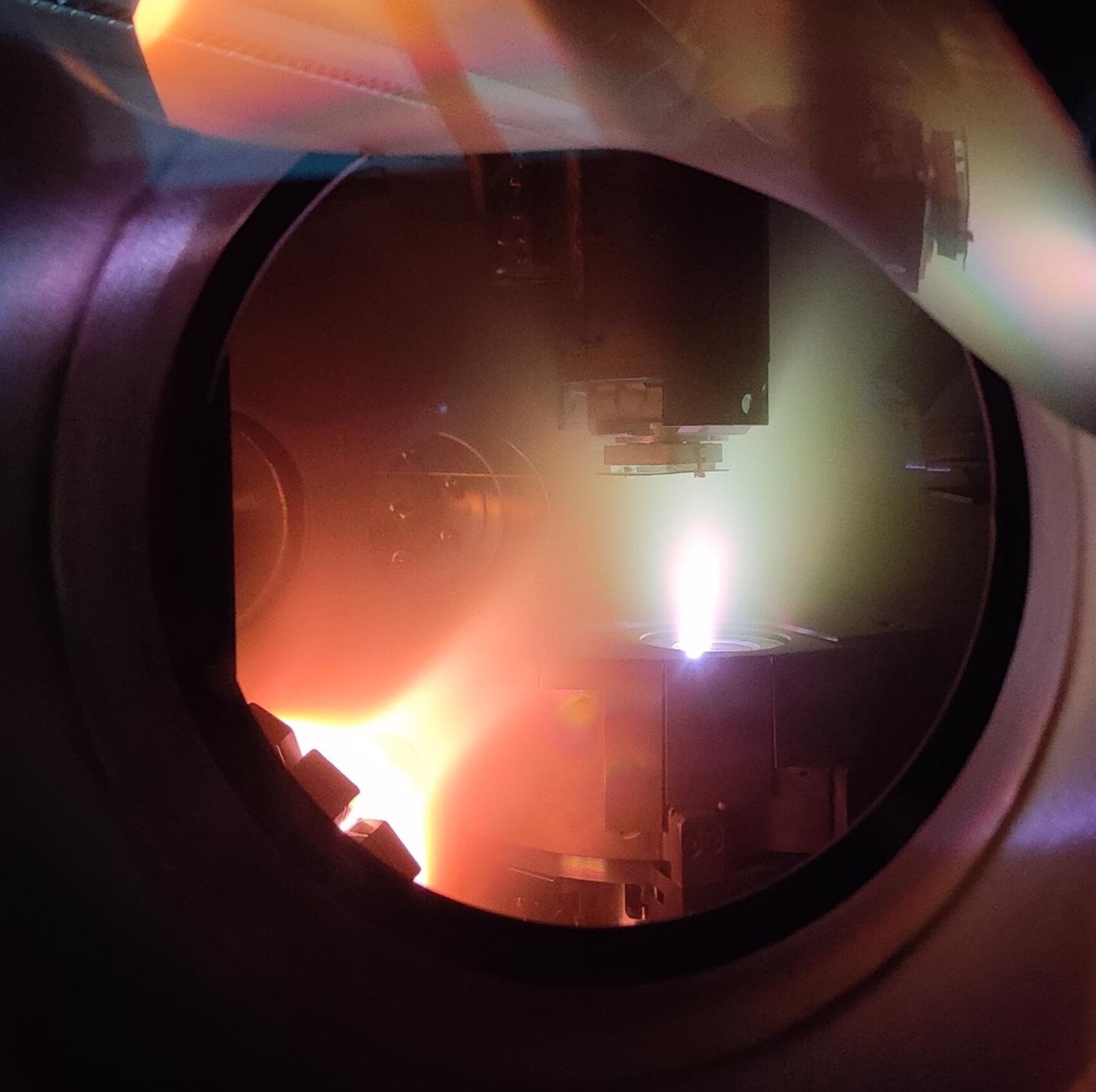Reviewed by Alex SmithApr 5 2022
Producing affordable metal-oxide thin films consisting of high electronic quality for solar water splitting is not a straightforward process. Thus, there is a need for thermal processing at high temperatures in quality improvements of the upper metal oxide thin films. This would melt the essential glass substrate.
 Pulsed laser deposition: An intense laser pulse hits a target containing the material, transforming it into a plasma which is then deposited as a thin film onto a substrate. Image Credit: R. Gottesman/Helmholtz Zentrum Berlin.
Pulsed laser deposition: An intense laser pulse hits a target containing the material, transforming it into a plasma which is then deposited as a thin film onto a substrate. Image Credit: R. Gottesman/Helmholtz Zentrum Berlin.
Currently, a research team at Helmholtz Zentrum Berlin (HZB)-Institute for Solar Fuels has helped resolve this dilemma: A high intensity and fast light pulse heats the semiconducting metal-oxide thin film directly, thereby enabling the ideal heating conditions to be obtained without causing any damage to the substrate.
At the surface of photoelectrodes, it is possible for solar energy to directly drive electrochemical reactions. Photoelectrodes comprise semiconducting thin films on transparent conductive-glass substrates that help change light into electricity.
The majority of the photoelectrochemical studies have concentrated on water splitting, a thermodynamically uphill reaction that could provide an appealing pathway for the long-lasting capture and storage of solar energy by producing the so-called “green” hydrogen.
Metal-oxide thin-film photoelectrodes are interesting for these different functions. They consist of ample elements, possibly providing infinite tunability to obtain the preferred properties — at possibly affordable rates.
Made from Plasma
Many research groups have indulged themselves in engineering such photoelectrodes at the HZB Institute for Solar Fuels. The general method to produce them is through pulsed laser deposition: an intense laser pulse hits a target consisting of the material and erodes it into a highly energetic plasma that has been deposited on a substrate.
Quality Needs Heat
Additional steps are required to enhance the quality of the deposited thin film. In particular, thermal processing of the metal-oxide thin-film helps decrease defects and imperfections. But this creates a problem.
Decreasing atomic defects concentration and enhancements in crystalline order of the metal-oxide thin films would need thermal processing temperatures ranging between 850 °C and 1000 °C but the glass substrate melts at 550 °C.
Flash-Heating the Thin Film
Dr. Ronen Gottesman from the HZB Institute for Solar Fuels has currently resolved this issue: After deposition, making use of high-powered lamps, he flash-heats the metal-oxide thin film. This heats it to 850 °C without melting the basic glass substrate.
The heat efficiently reduces structural defects, trap states, grain boundaries, and phase impurities, which would become more challenging to mitigate with an increasing number of elements in the metal-oxides.
Ronen Gottesman, Institute for Solar Fuels, Helmholtz-Zentrum Berlin
Gottesman added, “Therefore, new innovative synthesis approaches are essential. We have now demonstrated this on photoelectrodes made of Ta2O5, TiO2, and WO3, which we heated to 850 °C without damaging the substrates.”
Record Performance for α-SnWO4
Furthermore, the new technique used was successful with a photoelectrode material that is taken into account as a very good candidate for solar water splitting: α-SnWO4. Conventional furnace heating avoids phase impurities.
Rapid thermal processing (RTP) heating enhanced crystallinity, electronic properties and performance. This results in a new record performance of 1 mA/cm2 for this material, 25% more compared to the earlier record.
This is also interesting for the production of quantum dots or halide perovskites, which are also temperature-sensitive.
Ronen Gottesman, Institute for Solar Fuels, Helmholtz-Zentrum Berlin
Journal Reference:
Gottesman, R., et al. (2022) Shining a Hot Light on Emerging Photoabsorber Materials: The Power of Rapid Radiative Heating in Developing Oxide Thin-Film Photoelectrodes. ACS Energy Letters. doi.org/10.1021/acsenergylett.1c02220.